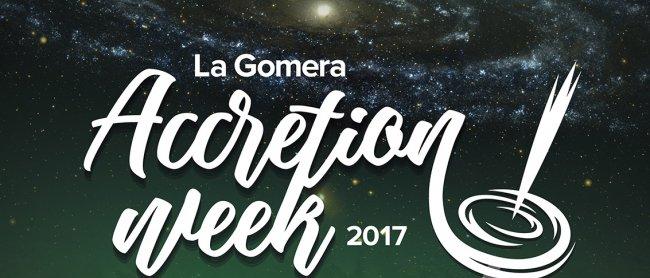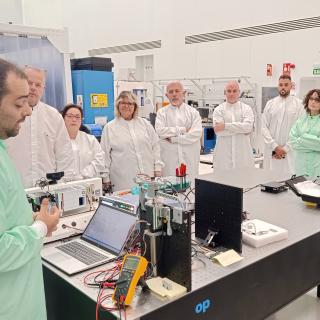Were it not for the stars, and other objects such as the Moon, which reflect their light, the sky would be a dark, virtually infinite blanket. Within this darkness there are certain bodies which neither emit nor reflect light because their intense gravity swallows it so that it cannot escape. So how can we “see” them? This elusive objects, black holes, can be detected only if they interact with matter from stars very near to them in binary star systems. This process, in which the material falls into the black hole is termed “accretion”, and also occurs for neutron stars and white dwarfs, which also have the property of possessing strong magnetic fields. Knowing the main physical processes which occur in their neighbourhood will give us basic clues to find and understand them.
This is the basic purpose of “La Gomera Accretion Week, 2017” a conference which next week will bring together in San Sebastián de La Gomera 65 specialists from around the world who are researching these ultra-compact stellar objects.
“The detailed study of the process of accretion, which causes the emission of huge amounts of light, from X-rays to radio waves, as well as the ejection of matter in the form of jets and winds, will be the main focus of this conference” comment Montserrat Armas Padilla and Teo Muñoz Darias, researchers at the IAC who are chairs of the scientific organizing committee. “During these five days of lectures and debates” they add, “many of the most important researchers in the world in this field will be present”.
In the framework of this event, two free activities open to the public will take place in the same city, related to research in astrophysics. On Thursday 14th September at 20.00h in the main hall of the Cabildo, Pablo Rodríguez Gil, a researcher at the IAC and the University of La Laguna (ULL) will give a popular talk with the title “White dwarfs, neutron stars, and black holes”. In addition, on Saturday 16th near the Playa de la Cueva beach, there will be a session of observations through telescopes, led by researchers at the IAC.
Scientific Organizing Committee:
- Teo Muñoz Darias (IAC, chair)
- Montserrat Armas Padilla (IAC, co-chair)
- Paolo D’Avanzo (INAF-Brera/Italy)
- Nathalie Degenaar (Cambridge / Masterdam University, The Netherlands)
Local Organizing Committee:
- Montserrat Armas Padilla (IAC, chair)
- Teo Muñoz Darias (IAC, co-chair)
- Juan A. Fernández-Ontiveros (IAC)
- Felipe Jiménez-Ibarra (IAC)
- Daniel Mata Sánchez (IAC)
More information:
Contact:
- Teo Muñoz Darias: Teo.Munoz-Darias [at] iac.es (Teo[dot]Munoz-Darias[at]iac[dot]es)
- Montserrat Armas Padilla: m.armaspadilla [at] iac.es (m[dot]armaspadilla[at]iac[dot]es)



